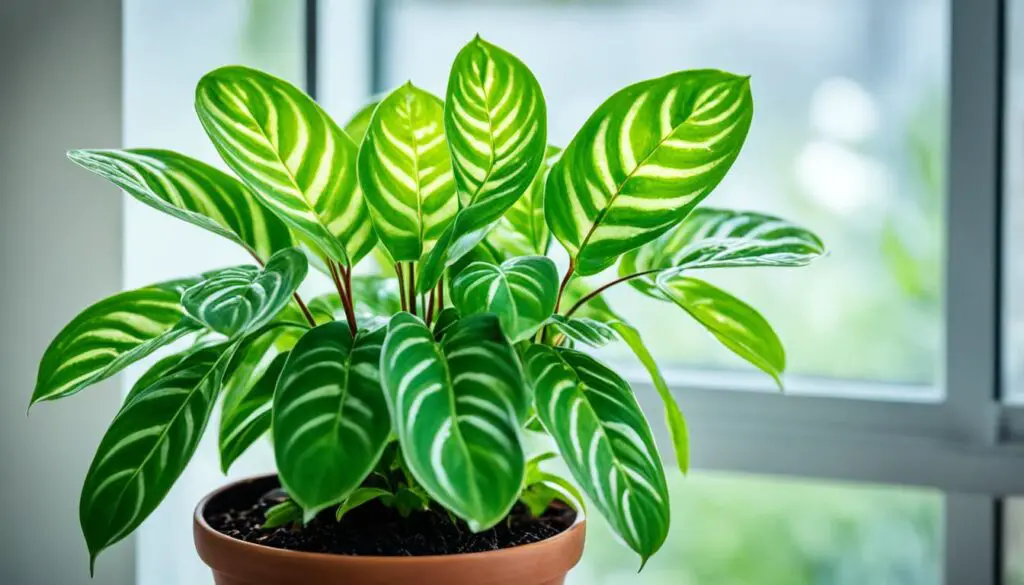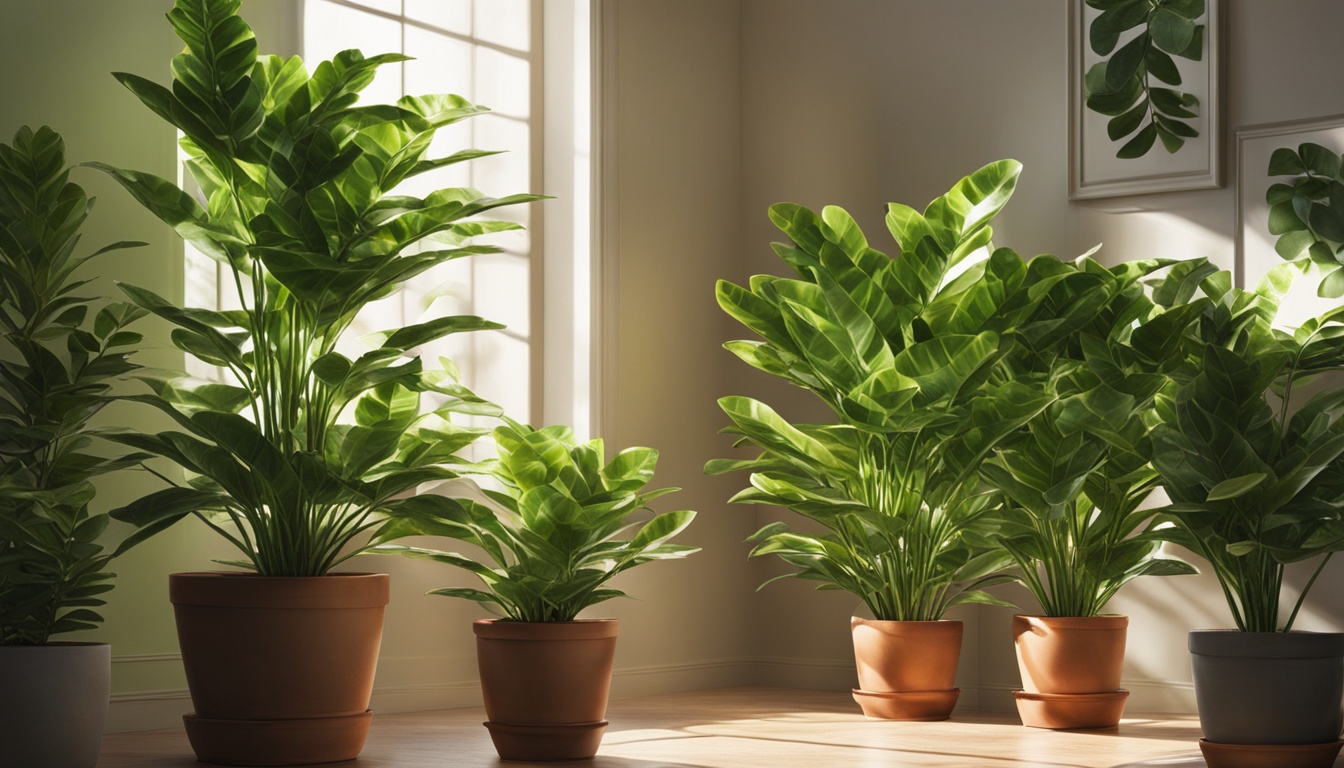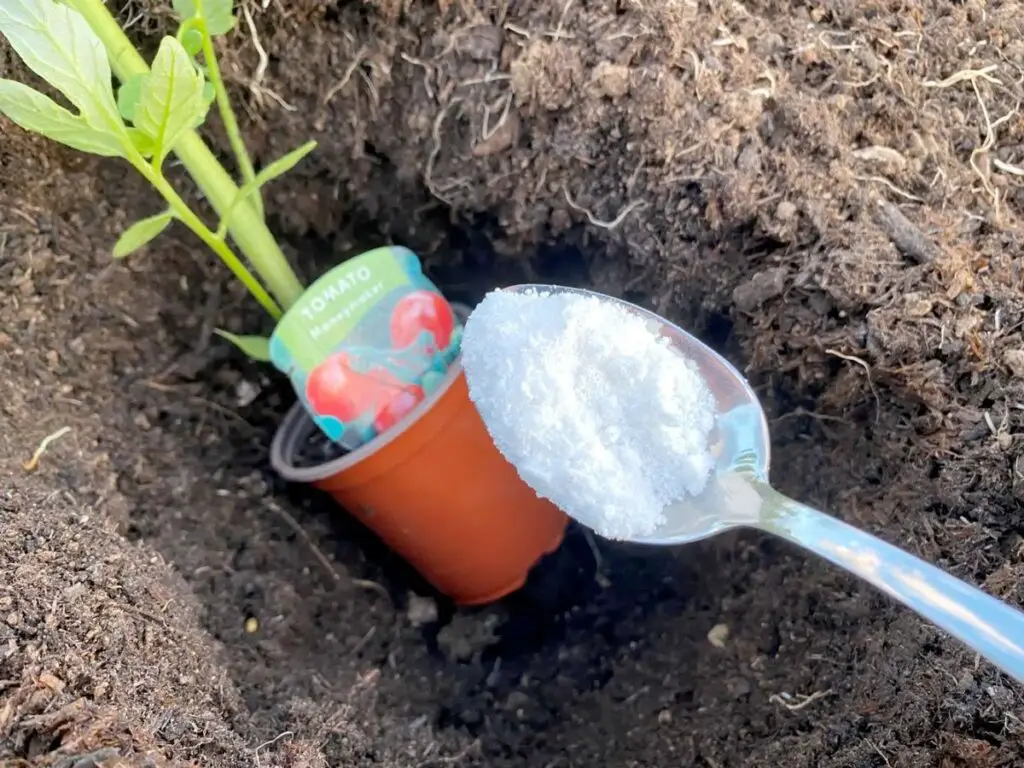The prayer plant (Maranta leuconeura) stands out with its unique foliage. Its leaves fold up like praying hands at night, earning its name.
It grows slowly, reaching about a foot tall indoors. These plants are great for indoor spaces and safe for pets and humans.

Key Takeaways
- The prayer plant (Maranta leuconeura) can reach a height of 6-12 inches tall and 6-12 inches wide.
- Prayer plants are toxic-free for pets and humans.
- They prefer bright, indirect light for the best growth.
- They do well in soil that drains well to prevent root rot.
- Prayer plants grow slowly, needing a new pot every 2-3 years.
What is a Prayer Plant?
The prayer plant, known scientifically as Maranta leuconeura, is part of the Marantaceae family.
This family was named after Bartolomeo Maranta, an Italian doctor and botanist from the 16th century. The name ‘prayer plant’ comes from how the leaves fold at night, looking like they’re praying.
Common Types of Prayer Plants
Several species of the Maranta genus are favorites among gardeners:
- Red/Tri-Colored Maranta (Maranta leuconeura var. erythrophylla)
- Rabbit’s Tracks Maranta (Maranta leuconeura var. kerchoveana)
- Green Maranta (Maranta leuconeura var. erythroneura)
- Black Maranta (Maranta leuconeura var. massangeana)
Many Maranta species, like the prayer plant, have rosmarinic acid. This is the same compound that makes rosemary smell so good.
These plants are loved for their beautiful leaves and bright colors, perfect for indoor gardens.
“Prayer Plants are gaining popularity as houseplants due to their unique foliage and easy care requirements.”
| Prayer Plant Variety | Leaf Characteristics |
|---|---|
| Red/Tri-Colored Maranta | Leaves with dark green centers, bright red edges, and purple undersides |
| Rabbit’s Tracks Maranta | Leaves with dark green centers and light green ‘rabbit tracks’ along the veins |
| Green Maranta | Leaves with dark green centers and lighter green/silver patterns |
| Black Maranta | Leaves with dark green centers and black/purple undersides |
Grow A Prayer Plant and Care
Prayer plants love the warmth and humidity of a tropical greenhouse. They need well-draining soil and regular food to grow well. They also prefer bright, indirect sunlight but avoid direct sun to protect their leaves.
Light Requirements
Prayer plants can live in low light but might get too long if it’s too dark. They do best about 6-7 feet from a sunny window, getting medium indirect light. Make sure they’re not in direct sunlight to prevent leaf burn.
Soil and Water Needs
Use well-draining, acidic soil for your prayer plant. Water when the top soil layer is dry, but don’t let it dry out completely. Use filtered or distilled water to prevent leaf browning.
Keep the soil evenly moist, not too wet or dry. Feed the plant with a diluted houseplant fertilizer every two weeks in spring and fall. Cut back to once a month in winter.
FAQ
What is a prayer plant?
The prayer plant (Maranta leuconeura) is a unique tropical houseplant known for its striking leaves. It’s named for its leaves that fold up at night, resembling praying hands. This makes it stand out.
What are the different types of prayer plants?
Popular types include Maranta leuconeura or M. leuconeura ‘Tricolor.’ These plants contain rosmarinic acid, which smells like rosemary. Common species include the Red/Tri-Colored Maranta, Rabbit’s Tracks Maranta, Green Maranta, and Black Maranta.
How do I care for a prayer plant?
Prayer plants love warm, humid environments with well-draining soil and regular feeding. They need bright, indirect sunlight but avoid direct sun to prevent burning. They can grow in low light but may stretch out too much.
Water your plant when the top soil layer dries out. Keep the air around it warm and humid. Feed it every two weeks from spring to fall with a diluted houseplant fertilizer.



